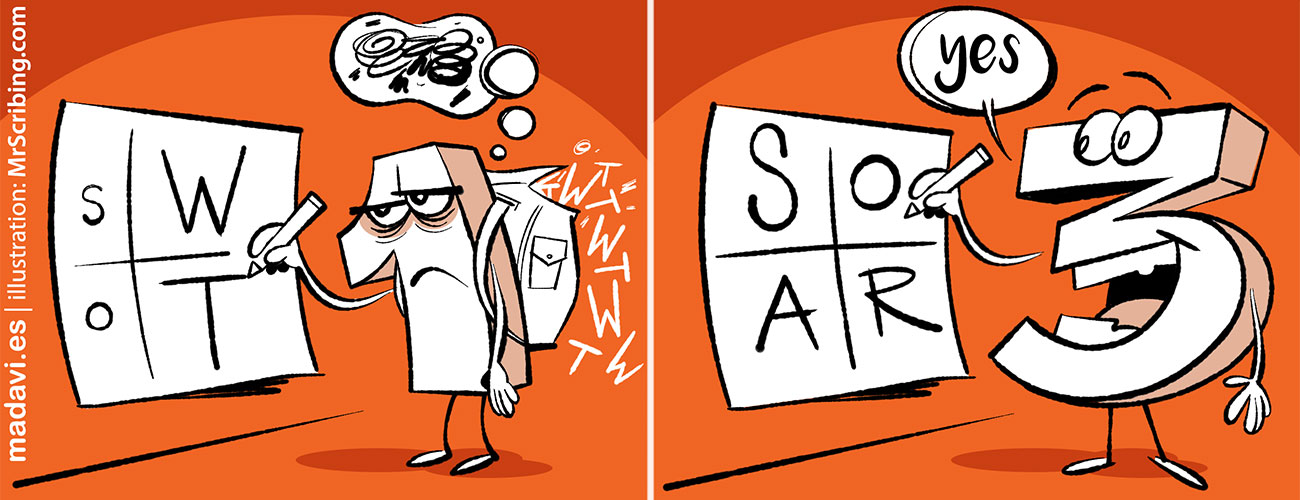Barbara Fredrickson and Marcial Losada have demonstrated that to be in top mental form the ratio between positive and negative mental states has to be at least 3 to 1.
Maintaining this ratio enormously affects our energy, resilience and capacity to be creative and to act.
However, a great part of actual management techniques concentrates more on the negative rather than the positive. What do we investigate more, success or failure? When something fails the tendency is clear, we insist on understanding what has happened to resolve the problem and to make sure it does not happen again. Analyzing problems come very naturally.
But what about the analysis of success? Normally, in the best of cases, we tend to congratulate those who have been successful and that is where the conversation ends. Our proposal is to analyze success, to question, not simply to congratulate: What have you done to have so much success?
It is reasonable to think that a firm that is in the market has many more successes than failures. The idea is to analyze at least three cases of success for each one of failure.
An obvious example is the famous SWOT. Strengths and Opportunities are positive visions while on the contrary Weaknesses and Threats are negative, or at least tend to create negativity and in many cases are accompanied by the projection of who is to blame.
A client told me one day: “if a problem arises and someone smiles it means that they already know who is to blame. As if knowing that solves anything.
Moreover, how much time do we spend on strengths and opportunities and how much on weaknesses and threats? In my own humble experience, teams investigated spend at least twice as much time on the negative part creating a ratio of 1-2, which is far from the 3-1 which is suggested by the study of Barbara and Marcial.
The alternative is to do a SOAR, Strengths, Opportunities, Aspirations and Results, the methodology of Jacqueline Stavros. Basically, it is about defining the result and to achieve it one aligns what we DO have -strengths-, towards what we DO want -aspirations-, in the context of the opportunities that the environment offers us.
One needs to bear in mind that the aligning of strengths not only generates performance but also transforms learning and with it the acquisition of new strengths.
If you have done a SWOT many times it is worth trying at least once a SOAR. You will like it and the energy produced enabling action will much greater.
On the web http://positivityratio.com/single.php you will find a test to discover your own ratio of positivity.
In this video, you will find the explanation of Barbara:

